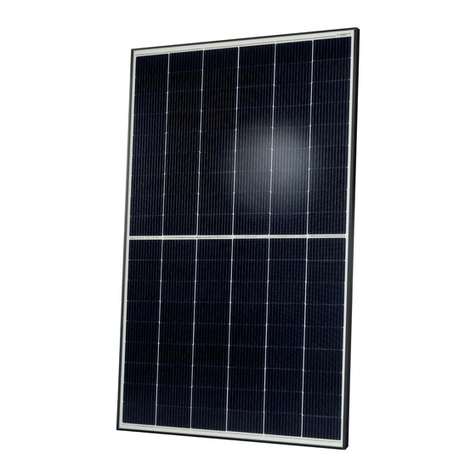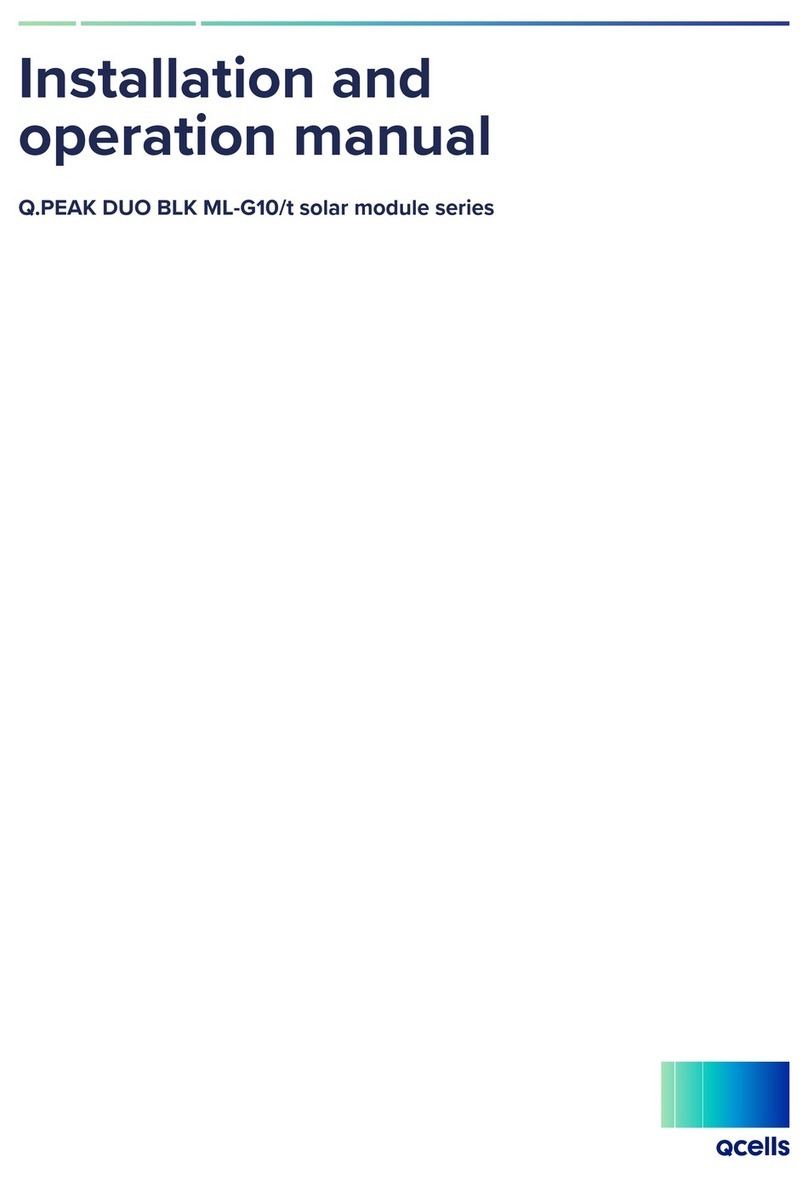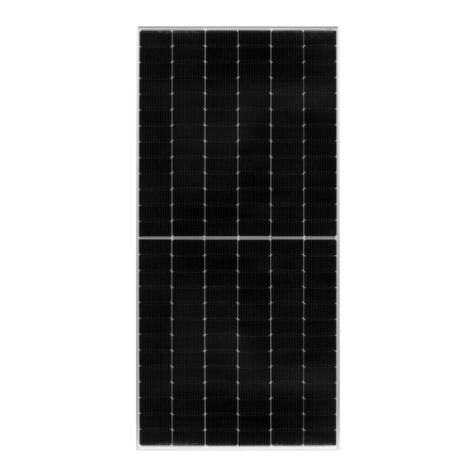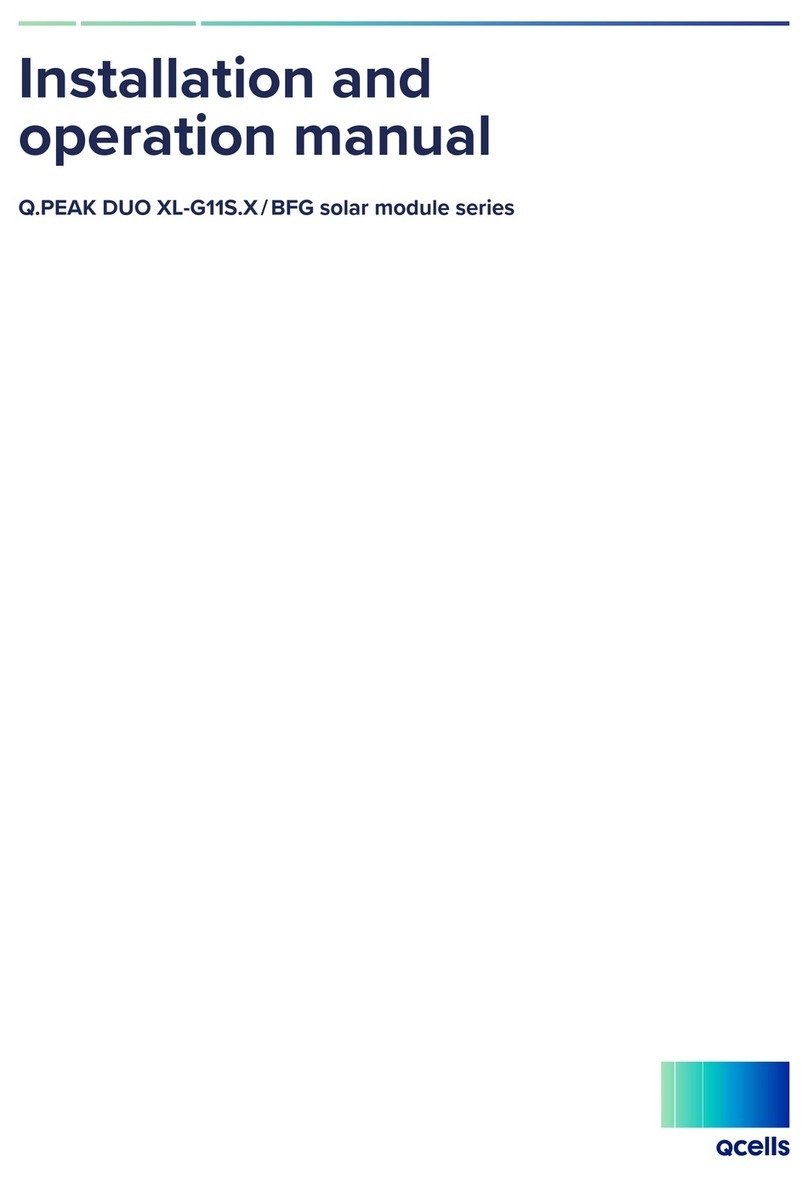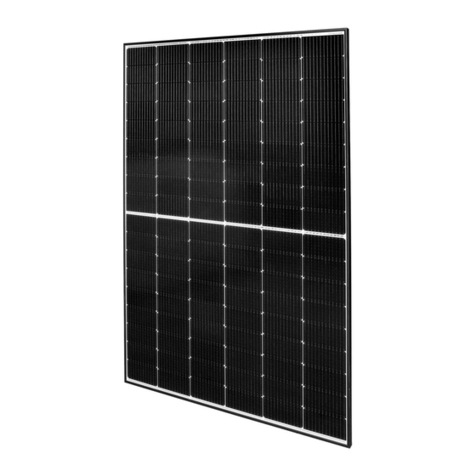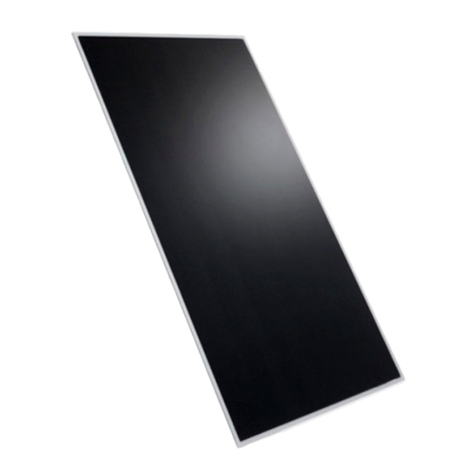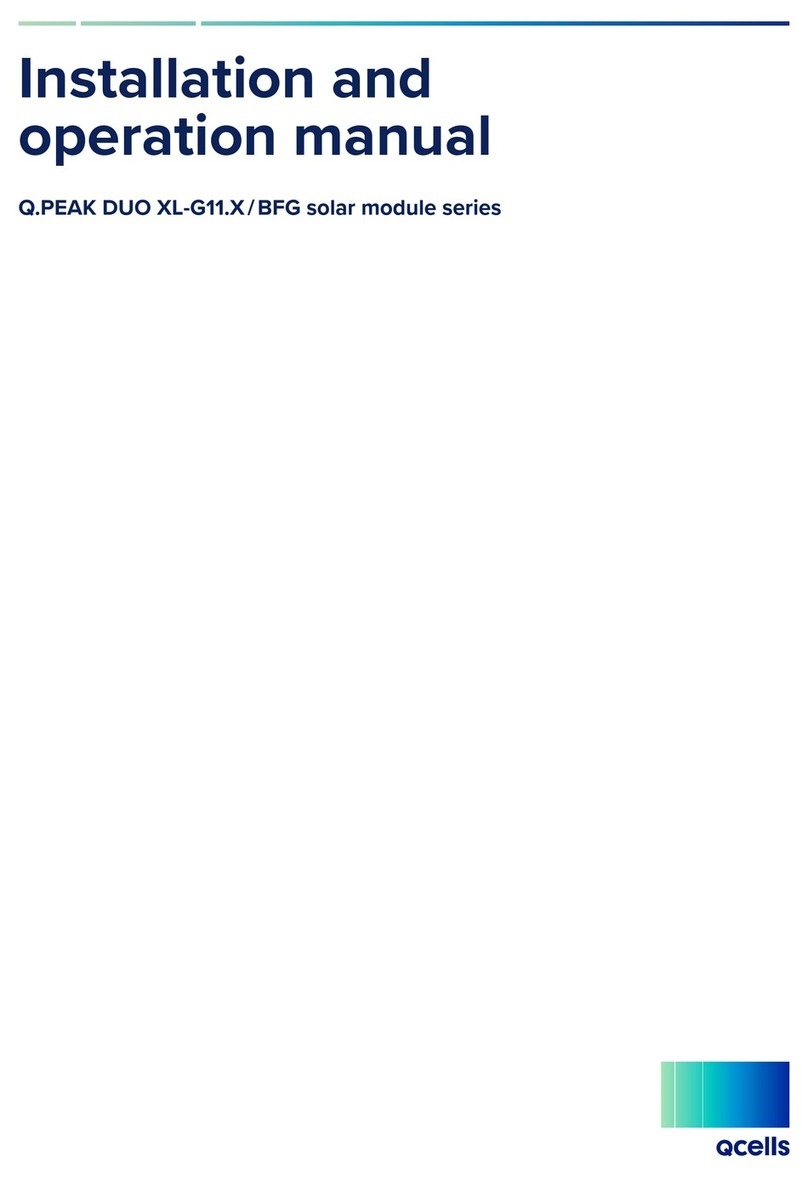
6 7INSTALLATION AND OPERATION MANUAL SOLAR MODULES Q.PEAK DUO ML-G10.X – Q CELLS INSTALLATION AND OPERATION MANUAL SOLAR MODULES Q.PEAK DUO ML-G10.X – Q CELLS
Installation Site
Please note the following guidelines that apply to the installation
site:
• Solar modules are not explosion-proof and are not suitable
for use in explosive environments.
ÄDo not operate solar modules near highly flammable gas and
vapors (e.g. gas tanks, gas stations).
ÄDo not install modules in enclosed space.
ÄDo not install modules in locations where they may be sub-
merged in water (e.g. floodplains).
ÄDo not use modules as a substitute for the normal roofing
(e.g. modules are not watertight).
ÄDo not install modules in close proximity to air conditioning
systems.
ÄDo not install modules above 4000 m (13120 ft) altitude
above sea level.
ÄContact with saline water (e.g. spray water from the sea) and
salt aggregation on the modules must be avoided.
ÄDo not bring any chemical substance (e.g. oil, solvent etc.)
into contact with any part of the panel. Only substances,
which are released by Q CELLS, are allowed to be used during
installation, operation and maintenance.
ÄAny installation of modules on surfaces of water is prohibited.
This includes installations on floating as well as pile-based
platforms. Q CELLS may extend the coverage of its warranty
to such installations, based on a case by case assessment of
the system design and location. A prior written consent by
the warrantor is required in any case.
The solar modules are designed for the following applications:
• Operating temperatures from –40°C to +85 °C
(–40°F to +185 °F).
• Pull loads up to max. 4,000Pa and push loads up to max.
5,400Pa (see chapter „Mounting Options“).
• Installation using a mounting structure for solar modules.
Prevention of Shadowing Effects
Optimal solar irradiation leads to maximum energy output:
ÄFor this reason, install the modules so that they face the sun.
ÄAvoid shadowing (due to objects such as buildings, chimneys
or trees).
ÄAvoid partial shading (for example through overhead lines,
dirt, snow).
Mounting Structure Requirements
The Modules shall be installed and operated on mounting structures
that comply with any applicable laws and stipulations as well as
with the following:
• Conform to the necessary structural requirements.
• Compliant with local snow and wind loads.
• Properly fastened to the ground, the roof, or the façade.
• Forces acting on the module are relayed to the mounting
substructure.
• Ensures sufficient rear ventilation of the module.
•
Avoid the usage of different metals to prevent contact corrosion.
• Allows for stress-free expansion and contraction due to
temperature fluctuations.
ÄEnsure that no additional forces are applied through the
mounting system into the module except for the wind and
snow loads. Additional forces and moments of torque at the
mounting positions caused by torsions, displacements or
vibrations in the mounting system are not allowed.
ÄEnsure that the clamps and the mounting frame are com-
patible.
Clamp System Recommendations
Use customary clamps that satisfy the following requirements:
• Clamp width: ≥40 mm.
• Clamp height compliant with a 32mm frame height.
•
Clamp depth: 7-12mm. (applicable for all CL clamping mounting
options at section „2.3 Mounting Options“)
• Clamps are not in contact with the front glass.
• Clamps do not deform the frame.
• Clamps that satisfy the structural requirements based on the
conditions of the installation site according to the applicable
regulations and technical standards.
• Long-term stable clamps that securely affix the module to
the mounting frame.
Module Orientation Requirements
• Vertical or horizontal installation is permitted.
ÄEnsure that rain and melting snow can run off freely. No water
accumulation.
ÄEnsure that the drainage holes in the frame are not covered.
No sealing.
75°
3°
ÄMaintain the permissible angle of inclination.
• Minimum angle of inclination: 3°
• Inclination angles above 75° may be limited
by local regulations
ÄStanding water on the modules glass needs to
be avoided.
2 PLANNING
2.2 REQUIREMENTS
Fig. 2: External dimensions and components for
Q.PEAK DUO ML-G10.2, Q.PEAK DUO ML-G10.4
and Q.PEAK DUO BLK ML-G10.4
DETAIL A 16 mm
8.5 mm
24.5 mm
1088 mm
1879 mm
4 × Mounting slots (DETAIL A)
Frame
1045 mm
996 mm
32 mm
8 × Drainage holes
395.5 mm
EN
4 × Grounding points ø 4.5 mm
Label
≥1250 mm
≥1250 mm
For additional information see the relevant datasheet of the module provided at www.q-cells.com.
PRODUCT LINE Q.PEAK DUO ML-G10.2 Q.PEAK DUO ML-G10.4
Q.PEAK DUO BLK ML-G10.4
Type Q.ANTUM DUO Z Monocrystalline PERC
Length 1879mm 1879mm
Width 1045mm 1045 mm
Frame height 32mm 32 mm
Area 1.96m² 1.96m²
Weight 22.0kg 22.0kg
Max. system voltage VSYS 1500V 1000V
Max. reverse current 20A 20 A
Permissible
temperature range –40°C to +85 °C (–40°F to +185°F)
Junction box
protection class IP67 with bypass diode
Connector protection class IP68
Fire rating based on ANSI/UL
61730 C/ Type 1 C/ Type 2
Max. test load Push / Pull15,400Pa/ 4,000Pa 5,400 Pa/4,000 Pa
Max. design load Push / Pull13,600Pa/ 2,660Pa 3,600 Pa/2,660 Pa
Certificates Quality Controlled PV by TÜV Rheinland; CE-compliant; IEC 61215:2016; IEC
61730:2016; PV module classification: Class II; UL 61730
1Test and design load in accordance with IEC 61215:2016, depending on mounting options (see section „2.3 Mounting Options“)
2 PLANNING
2.1 TECHNICAL SPECIFICATIONS
